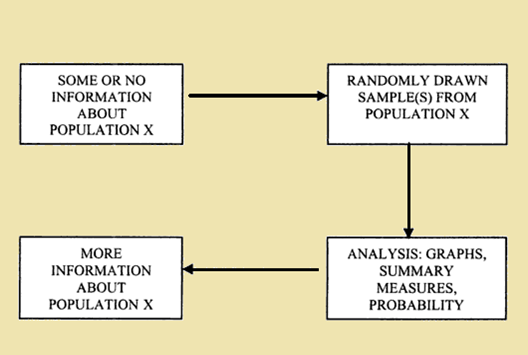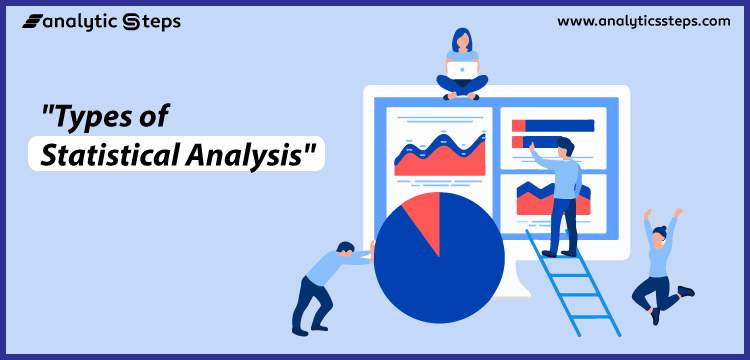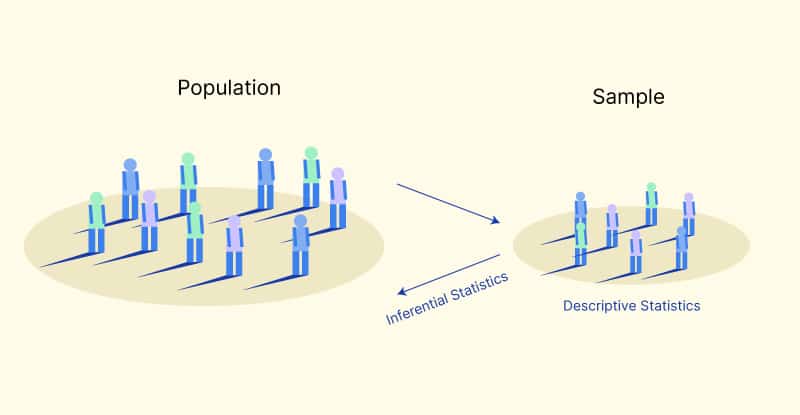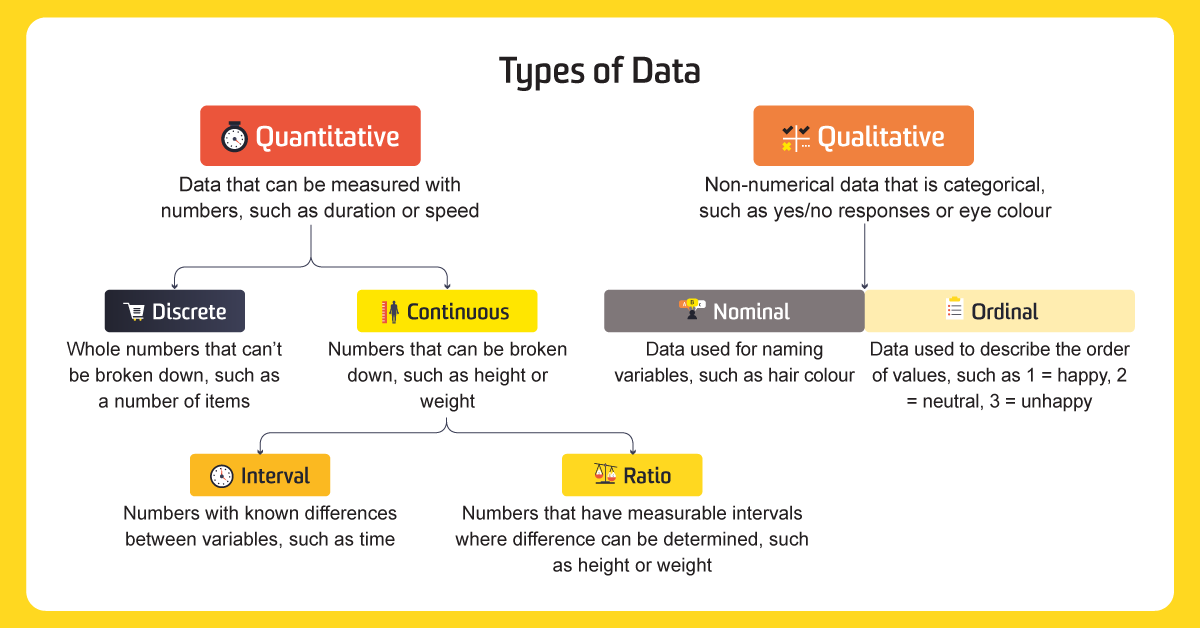Inferential Statistics Which Process or Measurement Should I Use
This need not be the case particularly with the widespread availability of powerful and at the same time user-friendly statistical software. There is no true zero on an interval scale which is what distinguishes it from a ratio scale.

There Are Three Methods For Validation Of Statistical Findings Bootstrap Split Group And Jack Knife Statistical Splits External Validity
As we have outlined below a few fundamental considerations will lead one to select the appropriate statistical test for hypothesis testing.

. Inferential statistics is the second of the two major categories of statistical analysis the first being descriptive statistics. Hypothesis tests confidence intervals and regression analysis. Inferential statistics deals with the process of inferring information about a population based on a sample from that population.
Inferential statistics is interested in populations. This includes the t-test Analysis of Variance ANOVA Analysis of Covariance ANCOVA regression analysis. It happens when the probability is set too big eg.
No violation has occurred this is a. On an interval scale zero is an arbitrary point not a complete absence of the variable. When analysing data such as the marks achieved by 100 students for a piece of coursework it is possible to use both descriptive and inferential statistics in your analysis of their marks.
Inferential statistics are produced through complex mathematical calculations that allow scientists to infer trends about a larger population based on a study of a sample taken from it. With inferential statistics it is important to use random and unbiased sampling methods. Scientists use inferential statistics to examine the relationships between variables within a sample and then make generalizations or predictions about how those variables will relate to a.
Depending on the question you want to answer about a population you may decide to use one or more of the following methods. It is also called inferential statistics. This violation of level of measurement criterion is common and results should be treated with caution.
To determine the minimum and the maximum length of the 5-point Likert type scale the range is calculated by 5 1 4 then divided by five as it is the greatest value of the. Type 1 false positive wrongly accepting an incorrect alternative hypothesis when the null should have been accepted. Descriptive statistics is used for describing distributions of samples.
It uses probability to reach conclusions. The main purpose of using inferential statistics is to estimate population values. With the use of this method of course we expect accurate and precise measurement results and are able to describe the actual conditions.
Descriptive statistics only measure the group you assign for the experiment meaning that you decide to not factor in variables. Interval data is measured along a numerical scale that has equal distances between adjacent values. There are two main areas of inferential statistics.
While descriptive statistics describe data inferential statistics allows you to make predictions from data. Inferential statistics use samples to draw inferences about larger populations. Most of the major inferential statistics come from a general family of statistical models known as the General Linear Model.
However we falter at inferential statistics. Hypothesis testing and confidence intervals are the applications of the statistical inference. Statistics that are used to generalize from a sample to a population.
See below for an in-depth review of their differences. A precise tool for estimating population. This means taking a statistic from your sample data for example the sample mean and using it to say something about a population parameter ie.
The assignment of numbers or codes according to prior-set rules. T A one-tailed test should be used only if you can specify the. There are many types of inferential statistics and each is appropriate for a specific research design and sample characteristics.
How to calculate the inferential statistical tests. Inferential statistics use measurements from the sample of subjects in the experiment to compare the treatment groups and make generalizations about the larger population of subjects. These distances are called intervals.
Descriptive and Inferential Statistics. Statistical inference is a method of making decisions about the parameters of a. This is where you can use sample data to answer.
Under the heading inferential statistics we are mainly interested in hypothesis testing. You randomly select a sample of 11th graders in your state and collect data about their SAT scores and other characteristics. Statistical inference is the process of analysing the result and making conclusions from data subject to random variation.
Inferential Statistics makes inferences and predictions about extensive data by considering a sample data from the original data. Saying that p 05. In inferential statistics p-value is the estimated probability of obtaining an apparent treatment effect at least as large as the one actually found given that the null hypothesis is true.
It is saying that something works when it really could have happened by chance. The process of inferring insights from a sample data is called Inferential Statistics The best real-world example of Inferential Statistics is predicting the amount of rainfall we get in the next. If the sample is not representative of the population valid statistical inferences cannot be made.
Because the sample size is typically significantly smaller than the size of the population such inferred information is subject to a measure of uncertainty. Differences between true answers and what appears on data collection instruments. Interestingly these inferential methods can produce similar summary values as descriptive statistics such as the mean and standard deviation.
Whenever you wish to compare the average performance between two groups you should consider the t-test for differences between groups. The most common methodologies in inferential statistics are hypothesis tests confidence intervals and regression analysis. This operation is a violation of level of measurement criterion and the results should be disregarded.
The calculation of certainty.

Inferential Statistics What Is Inferential Statistics Types Of Inferential Statistics Examples Of Inferential Statistics Advantages Of Inferential Statistics Inferential Statistical Analysis

Control Charts And Stability Analysis Chart Process Control Statistical Process Control

Data Analysis Flowchart Analysis Data Analysis Data Analytics

Basic Concepts In Statistics Infographic Statistics Math Statistics Studying Math

Inferential Statistics An Overview Sciencedirect Topics

Science Process Skills Powerpoint Notes Science Process Skills Science Lessons Science

Quote Of The Day Artificial Intelligence Will Reach Human Levels By Around 2029 Follow That Out Further To S Quote Of The Day Artificial Intelligence Human

Six Sigma Dmaic Process Measure Phase Measurement System Lean Six Sigma Change Management P Value

7 Types Of Statistical Analysis Definition And Explanation Analytics Steps

Difference Between Descriptive And Inferential Statistics Statistics By Jim

Pin By Julieth Katherine On Estadistica In 2022 Statistical Methods Inference Statistical

Science Process Skills Posters Science Process Skills Science Lessons 6th Grade Science

Inferential Statistic Whats And Hows Voxco

Types Of Data And The Scales Of Measurement Quality Digest

Figure 7 From Prioritization Based Taxonomy Of Devops Challenges Using Fuzzy Ahp Analysis Semantic Scholar Taxonomy Key Success Factors Analysis




Comments
Post a Comment